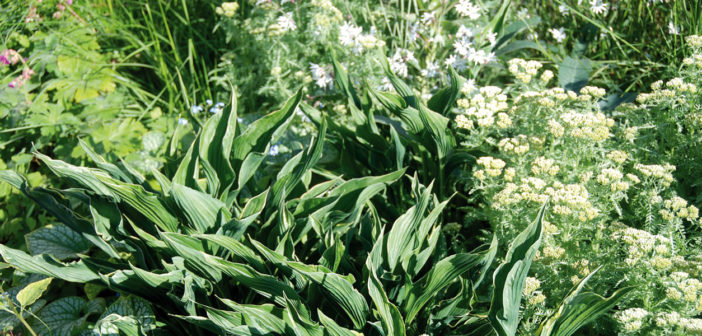Lotsa Hostas!
The grace and presence of the impressive hosta far outweighs the effort required to save them from slugs and snails.At the mere mention of a hosta, many people will recount their horror stories of slug and snail feeding frenzies, when all the Hostas were devoured in one night of mayhem. Ok, they seem to be the favoured food of our slimy garden enemies, but the grace and presence of their impressive foliage in the garden (Fig 1), far outweigh all the effort required to save them from midnight feasts. If you are concerned about trying hostas in your garden for fear of finding them devoured in the morning, plant slug-resistant varieties, use copper tapes around the tops of the pots, smear the rim of the pot with vaseline or collect them by torch-light at night in a bucket and flush them down the toilet.
The negative connotations associated with hostas are a bit unfair. They are one of the most popular foliage plants in a garden and it’s predominantly because of their magnificent leaves. Hostas are one of the most reliable plants for shady areas in the garden. Positioning a hostas in shady areas creates the correct micro-climate which they need, making it both cooler and more humid. What most Hostas require is good, indirect light, best provided by dappled shade under the canopy of trees. If you need to position a Hosta in the sun, there are some sun-tolerant varieties, such as ‘Royal Standard’ or ‘Sum and Substance’.
Read more in the July issue…





